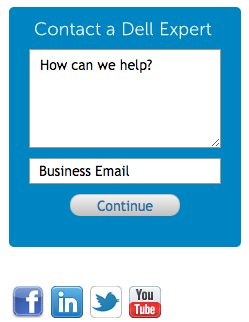Reversing Product Commoditization
 Box sales. Internet commodities. Bottom-dollar buys. Is it too late for the audio, video and lighting market for reversing product commoditization in the house of worship vertical segment?
Box sales. Internet commodities. Bottom-dollar buys. Is it too late for the audio, video and lighting market for reversing product commoditization in the house of worship vertical segment?
Encourage Systems Integration
In the online ‘box-sales’ world of product commoditization, the Internet sale is rumored to have removed service from the purchasing equation. Perhaps for truly commoditized parts and components this is more true, but I have seen some fairly high-end technology promoted as an online commodity ‘box sale,’ and I couldn’t disagree more with this line of thinking.
The value of A/V/L technology should be greater than a single output or function. Very, very little technology truly stands alone, which is why I continue to see systems integration firms thrive in spite of the online box sale dealer low-price sales techniques. Heck, even when some manufacturers have gone the direct sales route, the value of how technology fits into a context is more valuable than any singular component.
To embrace the consumer, position your products as part of a larger system and experience. This may seem odd, considering many products can be seen as “stand-alone” or as singular replacement components. Projectors, for example, may be seen as a singular product rather than the final output of a display system. On countless occasions I’ve been asked to specify a new projector for a church, only to arrive and find that the issue they thought was the projector was really a RadioShack connector or an antiquated scaler (or line doubler!).
Often, people forget that the entire signal chain is represented in the final technology result. So, if I’m a projector manufacturer that doesn’t offer external processing equipment, I am treating my marketing as an awareness campaign to help the consumer find a systems integrator to help the church meet their felt needs.
To bring value back to an overly-commoditized market, manufacturers must present experiences and solutions instead of features and benefits.
Embrace the Consumer
So how does a manufacturer or systems integrator embrace the house of worship consumer in an online, box-sale market? Get to know them.
 Dell has done some great things on its website — and it is in a commodity business if ever there was one. Yet, they have made it possible to engage prospects and clients to not only right-size the sale, but also provide the invaluable and needed customer service a human touch. The contact form on the right not only includes immediate customer service, but instant links to their social media channels — a purposeful focus that is a key element of their brand management. Plus, they’re adding to their database of prospects with key information, namely an email address. Smart.
Dell has done some great things on its website — and it is in a commodity business if ever there was one. Yet, they have made it possible to engage prospects and clients to not only right-size the sale, but also provide the invaluable and needed customer service a human touch. The contact form on the right not only includes immediate customer service, but instant links to their social media channels — a purposeful focus that is a key element of their brand management. Plus, they’re adding to their database of prospects with key information, namely an email address. Smart.
Quick fact: the house of worship market is made up of people. People like you and me. People who have the same concerns, red tape and myriad choices to sift through. This means you know something about this market even if you’ve never attempted to address it: People are people.
When positioning your products online, address their unique market experience and provide them with a contextual example of how your product(s) helps them do two important things: 1) How it solves a problem unique to their context; 2) How it helps them take strides towards their ‘next level.’
To accomplish these two mandates, please first understand that this is not a features and benefits list. That will tell them something interesting, but it may not solve their problem or take their production operations to a new level of success. Instead, consider these two approaches.
Solve a Problem
Obviously, each venue will have varying issues and problems, so the answer here is define the context of the problem. Audio: “Feedback from people is helpful; feedback from your audio system is not.” Video: “Don’t let poor video quality detract from the message.” Lighting: “When people can’t focus on what’s happening, it’s time to make lighting easy to forget.”
The key idea is to help them readily identify with the problem in a simplified context that generally fits but is specific enough to be quickly identified with and understood.
Next Level Operation
Promising ‘next-level’ will mean a lot of different things to different consumers, but a common denominator is efficiency. Less really is more. Helping church buyers identify with easier setup, better control, volunteer-proof operation and the like are helpful ways of positioning the product. However, the value proposition is most identified in how the technology addresses today’s and tomorrow’s needs.
To help expand where a single article alone cannot, I’ve included a partial list of helpful articles that speak directly to the manufacturers, systems integrators and even the box-sales Internet dealers of AVL technology as it pertains to the church market. I’ve written about understanding the H.O.W. market, simplifying the product research experience, reaching churches through social media campaigns, standing behind your brand, calculating R.O.I. for churches, building targeted destinations, understanding church buyer sentiment, and even the buying cycles of churches. These articles will provide a plethora of options and spur discussion on how to embrace the unique House of Worship market consumer.
What do you think — is the commoditization of the AVL market too far gone to reverse the trend? Comment below.





